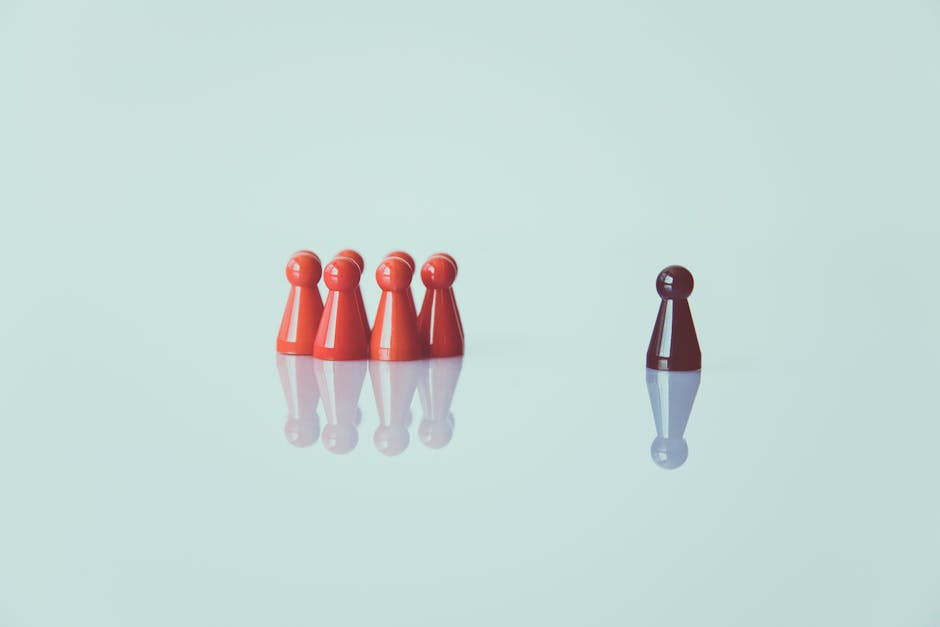
Calling all aspiring brand designers! If you’ve ever wondered why the golden arches of McDonald’s make us crave fries or why the Starbucks mermaid seems to beckon us with her siren song, then you’ve come to the right place. Today, we’re delving into the magical world of color and how it can make or break a logo. So grab your crayons and buckle up for a colorful ride through the wild world of brand design!
Understanding the Psychology of Color
Why do we get so worked up over what shade of blue to paint our walls or what color tie to wear to an interview? It all boils down to the fascinating world of color psychology. Let’s dive into the crazy, colorful world of how different hues can affect our moods and behaviors.
First things first, let’s talk about everyone’s favorite color (or so they say): blue. This serene hue is known for its calming and tranquil effects on the mind. It’s no wonder why so many corporate logos use blue – they want to convey trustworthiness and loyalty. But watch out – too much blue can leave you feeling a bit down in the dumps. So, to all the Smurfs out there, maybe throw in a pop of orange every once in a while to spice things up.
Now, onto the fiery shade of red. This bold color is all about passion and energy – it’s not called a power tie for nothing! Want to make a statement? Red is your go-to. Just be careful, this intense hue can also increase your heart rate and evoke feelings of anger. So, maybe skip the red room if you have a short temper.
And who could forget about the sunny color of yellow? This cheery hue is like a shot of espresso for your brain – it’s all about happiness and positivity. Feeling a bit down? Surround yourself with some yellow and watch those blues melt away. Just be wary of too much yellow – it can also make you feel anxious and overwhelmed. So, maybe save the mustard walls for a weekend project.

Choosing the Right Color Palette
When it comes to , it’s not as simple as picking your favorite colors and calling it a day. You need to consider factors like the mood you want to convey, the audience you’re targeting, and the overall aesthetic you’re going for. Here are a few tips to help you nail down the perfect color scheme for your project:
First off, think about the emotions you want to evoke with your color choices. Do you want to create a sense of calm and relaxation, or do you want to energize and excite your audience? Different colors can elicit different emotional responses, so think about how you want people to feel when they see your design.
Next, consider the psychology of color. Colors like blue can be calming, while red can be stimulating. Think about what message you want to send with your design and choose colors that support that message.
Lastly, don’t be afraid to get creative with your color choices. Experiment with different combinations and see what works best for your project. Remember, there are no hard and fast rules when it comes to choosing a color palette – trust your instincts and go with what feels right to you!

How Color Impacts Brand Perception
Have you ever noticed that fast food restaurants tend to use red and yellow in their branding? That’s because these colors are associated with hunger and urgency! Here are some ways color impacts brand perception:
1. Red: This color is known to increase heart rate and create a sense of urgency. It’s no wonder that companies like Coca-Cola and Target use red in their branding to grab your attention and make you want to buy their products ASAP!
2. Blue: On the other hand, blue is often associated with trust and reliability. That’s why companies like Facebook and American Express use blue in their logos to make you feel like you can trust them with your personal information and hard-earned money.
3. Yellow: Yellow is a color that’s often associated with happiness and optimism. Companies like McDonald’s and Best Buy use yellow in their branding to make you feel cheerful and excited about their products, even if you’re just buying a burger or a new TV.

Creating Memorable Logos with Color
When it comes to creating memorable logos, one of the most important elements to consider is color. The right color palette can make or break a logo’s impact, so it’s crucial to choose wisely. Here are some tips for using color to create logos that stick in people’s minds:
1. **Think about your target audience**: Different colors evoke different emotions and associations, so it’s important to consider who you are trying to reach with your logo. Are you targeting a corporate crowd? Go for sleek blues and grays. Trying to appeal to a younger demographic? Bright, bold colors might be the way to go.
2. **Don’t be afraid to stand out**: In the sea of bland logos out there, a pop of unexpected color can make your logo truly memorable. Whether it’s a neon pink or a vibrant turquoise, a bold choice can set your brand apart from the competition.
3. **Use color to tell a story**: Colors can convey a lot of information about a brand’s values and personality. For example, green might suggest eco-friendliness, while red can evoke passion and excitement. Use colors strategically to communicate your brand’s message without saying a word.

Utilizing Color Theory in Logo Design
Color theory is a key element in creating a visually appealing logo design. By understanding how different colors work together, you can create a logo that grabs attention and communicates your brand’s identity effectively. Here are some tips and tricks for utilizing color theory in your logo design:
1. Choose a color palette that reflects your brand: Select colors that evoke the right emotions and associations for your brand. For example, blue is often used to convey trust and professionalism, while yellow can represent energy and optimism.
2. Use contrasting colors to make your logo pop: By pairing colors that are opposite each other on the color wheel, you can create a logo that stands out and grabs attention. Think red and green, blue and orange, or purple and yellow.
3. Consider color psychology: Different colors can evoke different emotions and perceptions in viewers. For example, green is often associated with nature and growth, while black can convey sophistication and power. Keep these associations in mind when choosing colors for your logo design.
Color Trends in Logo Design
When it comes to logo design, staying on top of color trends is crucial for creating a visually appealing brand image. Here are some of the hottest right now:
Neon Vibes: Neon colors are all the rage in logo design these days. Think bright pinks, electric greens, and vibrant yellows. These bold hues are sure to make your logo pop and grab the attention of your target audience.
Earth Tones: On the opposite end of the spectrum, earth tones are also having a moment in logo design. Think rich browns, deep greens, and warm oranges. These colors evoke a sense of nature and sustainability, perfect for eco-friendly brands.
Gradient Madness: Gradients are making a huge comeback in logo design. Whether it’s a subtle fade from one color to another or a bold rainbow effect, gradients add depth and dimension to your logo. Embrace the gradient madness and watch your logo come to life!
Case Studies: Successful Logos that Harness the Power of Color
First up, let’s talk about the iconic FedEx logo. Have you ever noticed the sneaky arrow hidden between the “E” and “x”? It’s not just a happy accident – that arrow symbolizes speed and precision, perfect for a company in the business of fast deliveries.
Next, we have the colorful Google logo. Each letter is a different color, representing the diversity and creativity of the brand. Plus, it’s just fun to look at – kind of like a rainbow threw up on your computer screen.
Let’s not forget about the Target bullseye. That red and white logo is like a big, juicy target calling out to shoppers everywhere. It’s simple, bold, and impossible to miss – just like that extra slice of pizza you know you shouldn’t have.
And last but not least, the McDonald’s golden arches. That bright yellow “M” is like a beacon of hope for hungry people everywhere. It’s instantly recognizable and screams “cheap burgers and fries” – what more could you ask for?
FAQs
Why is color important in logo design?
Color is important in logo design because it can evoke certain emotions and associations in consumers. For example, red can convey excitement and passion, while blue can communicate trust and professionalism. Choosing the right colors can help your logo stand out and make a memorable impression on your target audience.
How can I use color to make my logo more effective?
When designing your logo, consider the psychology of color and how different colors can influence people’s perceptions. For example, using warm colors like red and orange can create a sense of urgency and energy, while cool colors like blue and green can convey a sense of calm and tranquility. By choosing colors that align with your brand’s values and personality, you can create a logo that resonates with your audience.
Are there any colors I should avoid using in my logo?
While there are no hard and fast rules about which colors to avoid, it’s important to consider the cultural and social connotations of different colors. For example, in some cultures, white is associated with mourning and death, while in others, it symbolizes purity and innocence. Be mindful of the cultural context in which your logo will be viewed and choose colors that will be well-received by your target audience.
How can I make sure my logo looks good in both color and black and white?
To ensure that your logo looks good in both color and black and white, design it in a way that relies on strong shapes and lines rather than solely on color. This will make your logo easily recognizable and versatile across different mediums. You can also consider creating a secondary black and white version of your logo to ensure that it is legible and impactful in all situations.
In Summary: Leave a Lasting Impression with Colorful Logos!
So there you have it! The power of color in crafting effective logos is no joke. From invoking emotions to creating brand recognition, choosing the right hues can make a world of difference in how your logo is perceived. So go forth, embrace the rainbow, and let your logo shine bright like a prism in a sea of bland black-and-white!











